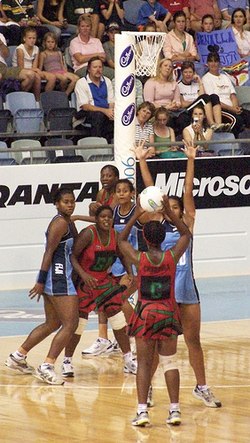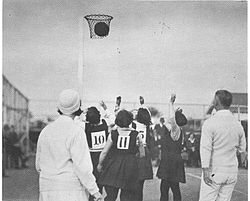The Evolution and Global Reach of Netball
Netball spread significantly from the early 1900s, deeply embedding itself in countries within the British Empire. It evolved uniquely, accommodating women's social norms and attire, and reduced player numbers over the years.
With the establishment of an international governing body, now World Netball, standardized rules helped in unifying various national forms of the sport, contributing to its globalization and burgeoning participation.
- International governing body standardized rules in the 1960s
- Transition from 9 to 7 player teams
- Significant competitions include World Championships and Commonwealth Games
- 20 million global participants today
Evolution of Netball
Changes Through the Decades
From the early 1900s onwards, netball spread across many parts of the British Empire. Countries such as England, Australia, and New Zealand began adopting the sport, with notable developments such as the refinement of player numbers from nine to seven. Over time, game rules evolved to better suit female players, addressing changes in dress codes and social norms associated with women in sports.
The Formation of International Bodies
In the mid-20th century, netball saw the establishment of an international governing body to standardize the game. Originally named the International Federation of Netball and Women's Basketball, it rebranded to World Netball. By 1960, this body played a crucial role in standardizing rules internationally, ensuring consistency in netball gameplay across countries.
Netball Today
Global Participation and Competitions
Today, netball enjoys widespread participation, with approximately 20 million players in over 80 countries. This team sport thrives particularly in Commonwealth nations. Major competitions include the World Netball Championships, Commonwealth Games, Quad Series, and Fast5 Series, which attract significant global attention and participation.
Differences from Basketball
Netball differs significantly from basketball in various aspects. Key differences include the absence of dribbling, positional restrictions that limit players' movement on the court, and distinct rules regarding scoring and interaction. These characteristics have defined netball's unique identity and appeal as a sport primarily played by women.
Conclusion
The journey of netball from its inception in the late 19th century to its current standing as a prominent sport illustrates the evolution of women's athletics. Understanding when netball was created sheds light on its dynamic adaptability and cultural significance, showcasing its ability to captivate and inspire millions worldwide.
FAQ
What is netball?
Netball is a team sport played on a rectangular court, primarily by women, where the objective is to score points by shooting a ball through the opposing team's goal ring.
How does netball differ from basketball?
Netball prohibits dribbling, has positional restrictions for players, and features unique scoring systems, differentiating it significantly from basketball.
Is netball a safe sport?
Yes, netball is generally considered a safe and controlled sport, with rules in place to minimize physical contact and ensure fair play.
What are the benefits of playing netball?
Playing netball promotes teamwork, physical fitness, coordination, and enhances social connections among players.
How can I get started with netball?
To get started, consider joining local clubs or schools that offer netball programs or leagues, where you can learn the rules and practice with experienced players.




